 BARRELL
GENEALOGY
BARRELL
GENEALOGY
PAINTINGS RELATED TO BARRALL & BARRELL FAMILY
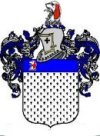
 BARRELL
GENEALOGY
BARRELL
GENEALOGY

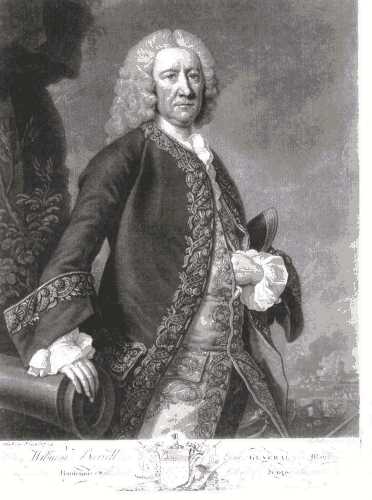 William Barrell
-details from Regimental Army Lists: William Barrell
-details from Regimental Army Lists:
27 March 1698 Shown on the Blenheim Roll as Lieutenant & Captain 1st Foot Guards. 1702 -1st Lieutenant of Grenadier Coy and Captain. 5 January 1705 Captain & Lieutenant Colonel 1st Foot Guards. 1 January 1707 Brevet Colonel. 1715 Colonel of 28th Foot. 1st Battalion The Gloucestershire Regiment 28th Foot Colonel Barrell's Regiment of Foot 1715 to 1730 1727 Brigadier General. 25 August 1730 Colonel of 22nd Foot. The Cheshire Regiment 22nd Foot Colonel Barrell's Regiment of Foot 1730 to 1734 8 August 1734 Colonel of the King's Own. 1 January 1735 Major General. 2nd July 1739 Lieutenant General 8 August 1739 Governor of Pendennis Castle. 9 August 1749 Died. Buried Westminster Abbey |
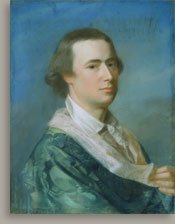 By the mid-1760s Copley was creating pastels in a rich range of vibrant
hues that echoed his oil palette of that period. Joseph Barrell
for example, depicts a wealthy merchant posing in a bright green silk dressing
gown and wearing his own hair rather than a wig. The pendant of his wife,
Hannah
Fitch (Mrs. Joseph Barrell) (about 1771,
Museum of Fine Arts, Boston), shows her uncorseted in a vivid blue dress
with a pink robe trimmed in ermine; the Barrells’ informal presentation
and luxurious costumes follow English rococo precedents.
Massachsets. Born 1739 Died 1804, He had 3 wives. He did marry a Sarah Simpson - 18 Nov 1778. They originally came from South Elmham and emigrated to Boston in 1637. Joseph is mentioned in the papers of George Washington, volume 5:251 
George Washington More on Joseph Barrell=
Shapley's Island--Small Pox Parties--Incidents and Pastimes.
|
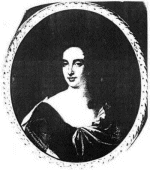 ANNE,
WIFE OF FRANCIS BARRELL OF ROCHESTER ANNE,
WIFE OF FRANCIS BARRELL OF ROCHESTER
dau of William Kitchell of Canterbury |
 BARRELL'S REGIMENT
(4TH FOOT) AT THE BATTLE OF CULLODEN, 1746 BARRELL'S REGIMENT
(4TH FOOT) AT THE BATTLE OF CULLODEN, 1746
By D. Morier: Other painting attributed to David Morier:-MORIER, David (1704/05-1770) The Battle of Culloden 1746 Portrait of Field Marshal Sir Jean Louis Ligonier Portrait of Augustus, Duke of Cumberland, with an Aide-Camp Portrait of George III with a Review of Troops Beyond Portrait of Augustus, Duke of Cumberland Portrait of General Ramsden Portrait of George III and General Ramsden The Prince Regent receiving a riding lesson from General Ramsden Sir Armine Wodehouse, 5th Bt (1714-1777) Portrait of George III with the Duke of Cumberland Portrait of George II (1683-1760) A Prancing Chestnut in the Georgian Riding House/A Grey Led by a Groom Portrait of General m Hawley Portrait of an officer of the 4th troop of horse |
 During the battle
of Culloden Campbell Militiamen and a force of dragoons had entered During the battle
of Culloden Campbell Militiamen and a force of dragoons had entered
the the enclosures on the left of the government line. They had gone forward and torn down the wall at the western end, almost in the rear of the Jacobite position. |
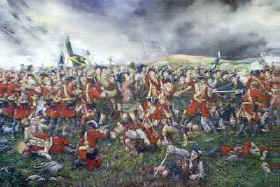 The ranks of the clansmen
had been severely reduced by the the time the clash The ranks of the clansmen
had been severely reduced by the the time the clash
came and though the fight was long and bloody both battalions held. Some parts of Barrell's fell back in the face of the killing broadswords but they did not break. |
 There were twenty-one
officers in Clan There were twenty-one
officers in Clan
Chattan when the charge began and eighteen of them were to die, most before they reached the government line. Incredibly though, some of them managed to cut their way through the ranks of Cholmondley's battalion and came up on the second line of government troops. |